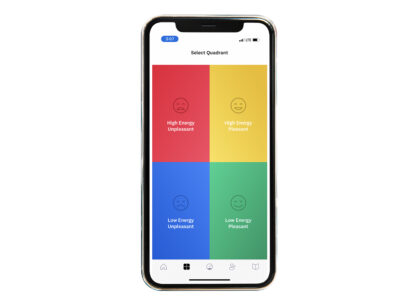The word “worry” comes from the Greek word for a divided mind, and the holiday season epitomizes that divided mind. We think we deserve a relaxed and joyous holiday season, yet so much about November and December seems to produce worry…pressure to buy the perfect gifts, to have the perfect holiday dinner with no arguing relatives, to entertain, etc. That adds up to a whole lot of worry, and worry of any kind is hazardous to your health. Among other effects, researchers believe that people who worry are 2 ½ times more likely to develop Alzheimer’s than more carefree folks.
Instead of a food recipe, my holiday recipe for you is one that will put worrying in its place. This “Worry- Smart” recipe gives you a new outlook on your worries plus specific strategies. No more paralysis and anxiety!
STEP ONE: CLEARLY SEE YOUR WORRIES
“I am an old man and I have known a great many troubles, but most of them never happened.” – Mark Twain
In this step, come into the present moment so that you can investigate your current worries. Close your eyes, slowly breathe in and out 10 times, mentally counting each out-breath (breathe in, breathe out and mentally say “one”, etc.) This exercise brings your body and mind into the present moment. Then follow the steps below.
- Make a written list of your worries.
- Cross out the worries that are not likely to happen. Don’t waste your energy on them!
- Who triggers your worries? Usually it’s our own negative self-talk, but sometimes a relative, friend, or co-worker can’t resist saying things that make us question our competence. (“You always freak out when it comes to deadlines.” or “Are you going to spend too much on gifts this year again?”) The easy solution is to minimize your time with them, but that’s not always practical. Instead, make a list of the people/comments that make you question your “Worry Smarts.” When one of these people makes a derogatory comment, give yourself a point for recognizing their patterns.
STEP TWO: PUT YOUR WORRIES IN THEIR PLACE
“Let our advance worrying become advance thinking and planning.”
– Winston Churchill
- Once again, come back to the present by closing your eyes. Slowly breathe in and out 10 times. This frees up space in your mind so that you can clearly see your worries and develop a plan.
- Review the “Worry List” that you created in step one above. Envision the best and worst that could happen. If it’s helpful, use absurd humor — best case is your sister-in-law loves your gift (for the first time ever); worst case is your sister-in-law throws her turkey drumstick at you. Then cross off the trivial ones that are not worth worrying about.
- Change the “Worry List” to third-person voice. This gives you emotional distance to see your worries more clearly. When you read, “Susan worries that she will overspend on gifts because she’s trying to please people,” there’s no self-judgment because it’s as if you are thinking about someone else. By taking the “I” out of the sentence, it’s much easier to come up with a solution for “Susan.”
- Put a check mark by the worries that you can’t control. Try reciting the Serenity Prayer for help in accepting things you cannot change.
- Choose a daily “worry time” of no more than 15 minutes. When worries creep up, say to yourself, “I will worry about that between 7:15-7:30 PM.” Then deliberately turn your attention to something else until it’s “worry time.” Make sure you won’t be interrupted and don’t make it too close to your bedtime.
- Don’t complain to other people about how worried you are! It reinforces the worry and no one wants to hear about it.
- Look at your original and edited “Worry Lists” and see whether you have a tendency to exaggerate negative issues and minimize positive ones. This helps you figure out whether you tend to overreact and over-worry.
When you have completed these two steps, congratulations! You’ve not only identified and come up with an action plan to deal with your current worries, but you know how you can better manage future issues. Don’t set yourself up for failure by expecting to be “Worry-Free.” Now you are “Worry-Smart” – you have a record of your worries, can see the patterns, can accept the worries you can’t control, and you can better manage those that you can.
Dr. Susan Murphy is a best-selling author, coach and speaker who specializes in relationships, conflict, leadership and goal-achievement. Dr. Murphy can be reached at Dr.Murphy@LiveWellClinic.org and (760) 674.1615.



















































Comments (8)
Great article! Clear, actionable, manageable! Thanks for sharing! :-) :-)
Thank you, Kathy Harris, for your feedback about the article. I appreciate that you took time to comment. Warmly, Susan
Thank you for a wonderful article that is helpful, heading into the busy, stressful holiday season!
Thank you, Ellizabeth. See Dr. Murphy’s comment below. Lauren
Thanks, Elizabeth, for your superb comment. I’m glad you found the article helpful! Holidays can actually be joyous if we can curb our tendency to worry about the wrong things. Joyfully, Susan
Hi Susan –
Fabulous article – I’m going to carry this throughout the “season”….
Nancy
Thank you, Nancy. See Dr. Murphy’s comment below. Lauren
Thank you, Nancy, for your message. How kind of you to write! I’m also going to try to carry this through the “season”. May we both be successful being “worry-smart”!
Warmly, Susan